Korean snack foods offer a fascinating window into the country’s unique culinary traditions. From street food favorites to packaged treats, these snacks range from instantly appealing to downright challenging for foreign palates. Whether you’re planning a trip to Korea or just looking to expand your snacking horizons at your local Asian market, knowing what to expect can help you navigate the colorful world of Korean munchies.
1. Beondegi (번데기) – Silkworm Pupae
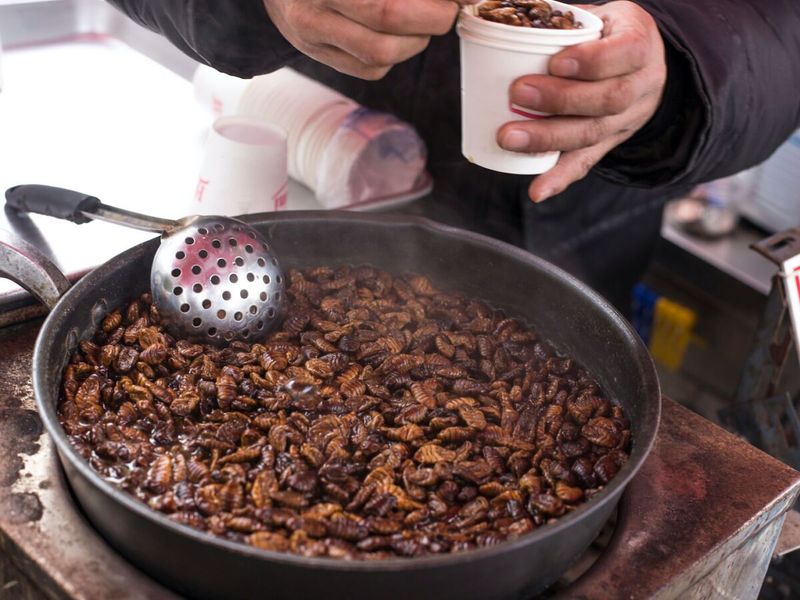
The unmistakable aroma of beondegi wafting through Korean markets stops many tourists in their tracks. These boiled silkworm pupae come served in paper cups, swimming in a brownish broth that enhances their earthy, somewhat nutty flavor.
Veterans of this snack describe the texture as similar to soft beans with a slight pop when you bite down. Many Koreans grew up eating beondegi as a protein-rich street food, developing a nostalgic attachment to its unique taste and smell.
First-timers often struggle with the psychological hurdle more than the actual flavor. If you’re feeling adventurous, start with just one – the taste isn’t nearly as intimidating as the appearance might suggest.
2. Dried Squid (Ojingeochae / 오징어채)
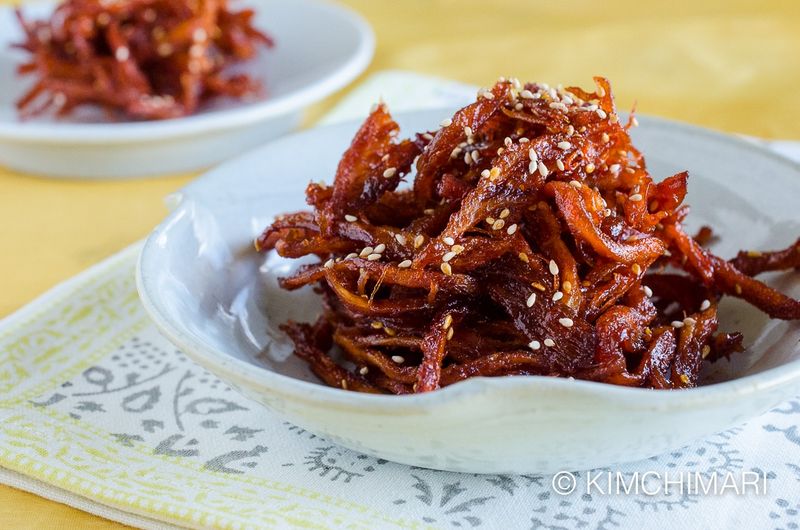
Walk into any Korean convenience store and you’ll spot packages of this amber-colored, shredded squid snack. The preparation process involves drying fresh squid, then shredding it into chewy strips that require some serious jaw power to eat.
Ojingeochae delivers an intensely savory, oceanic flavor punch that lingers long after you’ve finished eating. Many varieties come coated with a sweet-spicy glaze that balances the briny seafood taste. Koreans often enjoy this chewy delicacy alongside beer during social gatherings.
The powerful aroma can be off-putting to newcomers – some compare it to concentrated fish sauce – but dedicated fans insist the distinctive smell is part of its charm.
3. Cheonggukjang Chips (청국장칩)
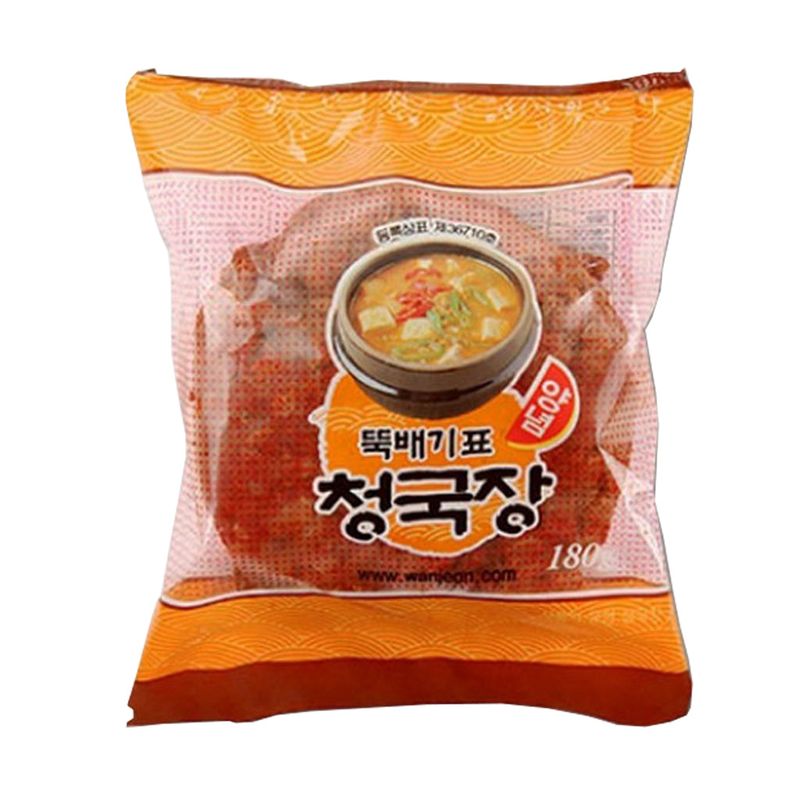
Bold adventurers only need apply for these polarizing potato chips! Flavored with cheonggukjang, a fast-fermented soybean paste with a reputation for its pungent aroma, these chips deliver an authentic taste of one of Korea’s most divisive traditional foods.
The fermentation process creates complex compounds that produce what some describe as ‘gym sock’ notes on first whiff. Yet beneath that initial funk lies a deeply savory, umami-rich flavor that devotees find irresistibly complex.
Even many Koreans approach these chips cautiously, making them something of a dare food. Those who push through the initial shock often develop a surprising appreciation for the depth of flavor – though you might want to brush your teeth afterward!
4. Kimchi-Flavored Snacks (김치 과자)
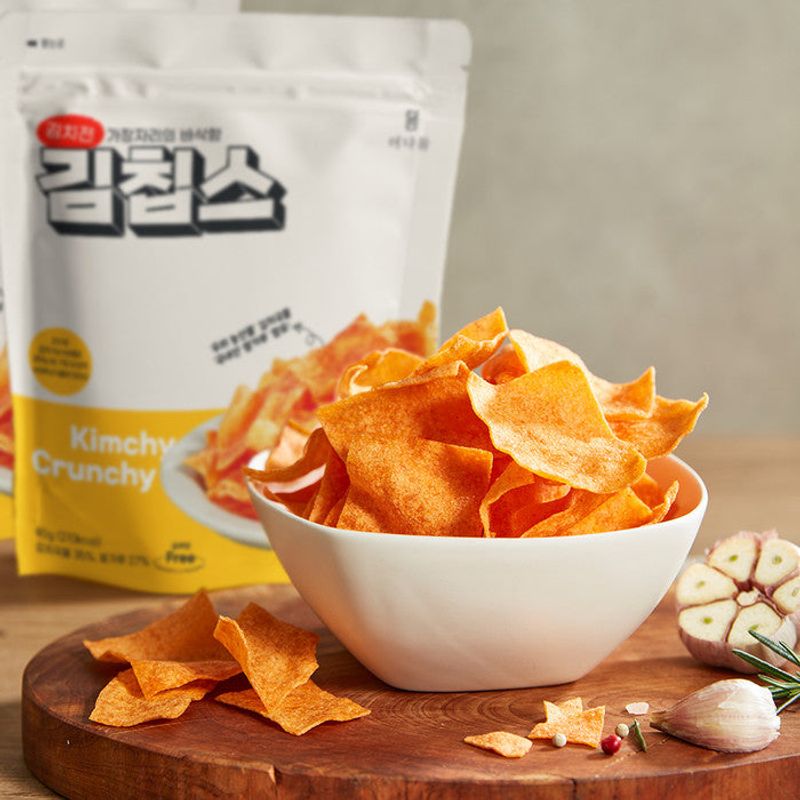
The signature fermented cabbage dish of Korea has spawned countless snack variations, from crackers to potato chips. These bright red treats capture kimchi’s complex flavor profile – spicy, sour, garlicky, and umami-rich – in convenient munchable form.
The challenge for newcomers isn’t just the spice level, which can be considerable. It’s also the fermented sourness that dominates these snacks, creating a tang that can seem overwhelming if you’re not accustomed to it.
Koreans grow up with these flavors from childhood, developing a palate that craves this specific combination. For foreigners, kimchi snacks often serve as a gateway to appreciating the real dish – start with milder varieties if you’re sensitive to spice or strong garlic notes.
5. Seaweed & Anchovy Snack Mix (멸치 견과류)
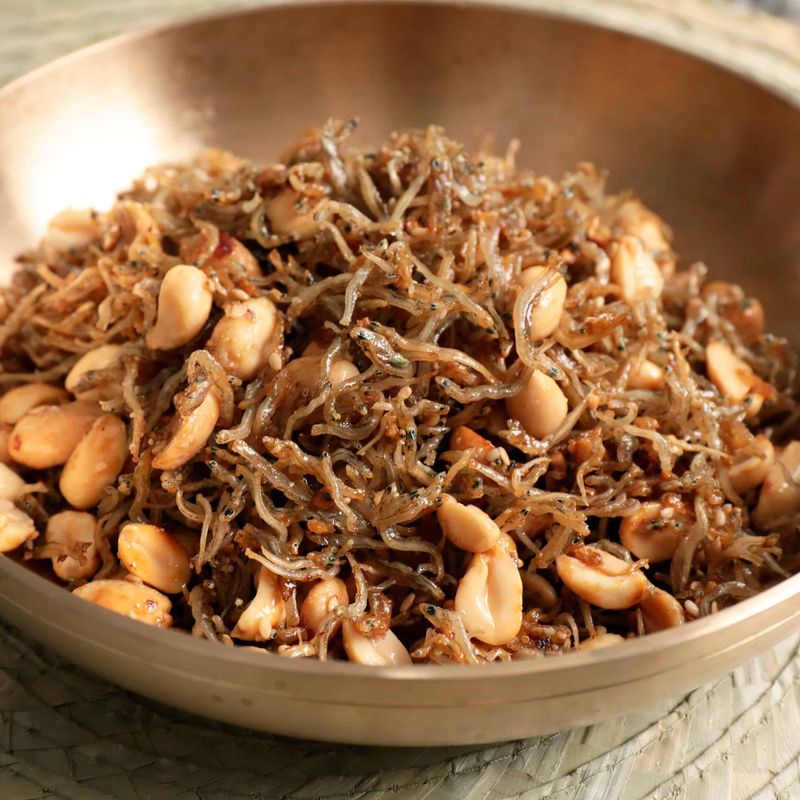
This protein-packed snack mix combines tiny dried anchovies, often no bigger than your pinky fingernail, with roasted nuts and crispy seaweed pieces. The anchovies provide a concentrated seafood punch that might surprise unprepared snackers expecting something more like trail mix.
Sweet, savory, and fishy flavors create a rollercoaster for your taste buds. The anchovies have been caramelized with soy sauce and sugar, giving them a candied quality that contrasts with their inherently briny character.
Popular as a beer accompaniment or energy-boosting afternoon snack, this mix reflects Korea’s peninsula geography and seafood traditions. First-timers might want to pick out just one anchovy to sample before committing to a handful of this uniquely Korean trail mix.
1. Hotteok (호떡)
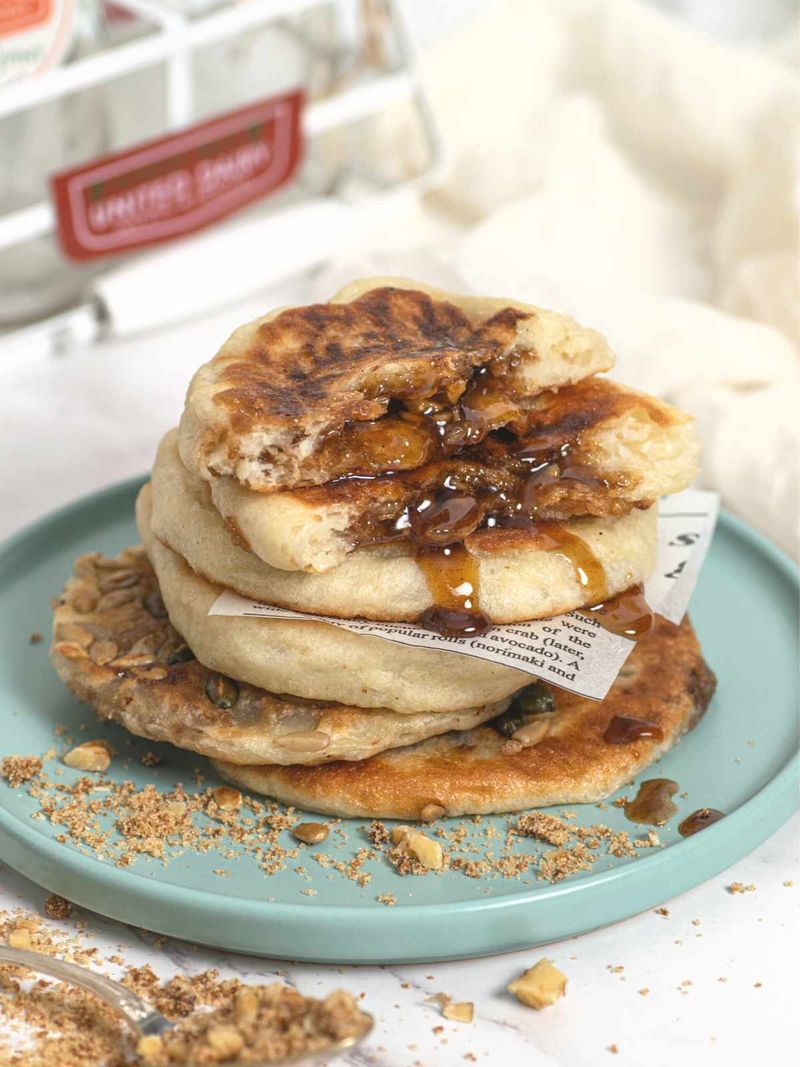
Steam rises from the sizzling griddle as the street vendor flattens a ball of dough into a golden pancake. That’s hotteok – Korea’s beloved winter street food that draws crowds willing to brave the cold for just one bite. The magic happens when you take your first bite.
The crispy exterior gives way to reveal a molten center of brown sugar, cinnamon, and chopped nuts that flows like delicious lava. The contrast between the chewy dough and sweet filling creates an irresistible textural experience.
Originally brought to Korea by Chinese immigrants, hotteok has evolved into a distinctly Korean treat. Modern variations include green tea, pumpkin, or even cheese fillings, but the traditional sweet version remains the gold standard for comfort food on chilly Korean evenings.
2. Tteokbokki (떡볶이)
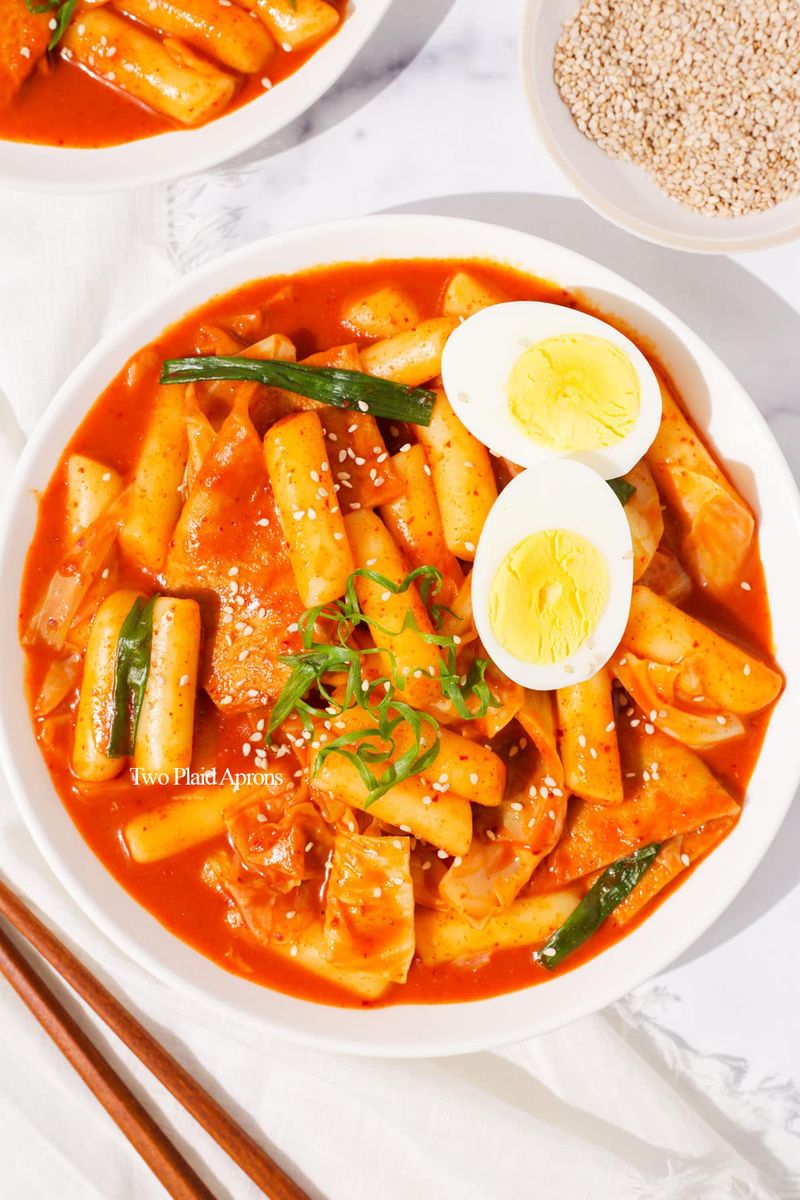
Fiery red sauce coats chewy rice cakes in this iconic Korean street food that manages to be simultaneously spicy, sweet, and deeply satisfying. The cylindrical rice cakes, called tteok, have a unique glutinous texture that’s bouncy yet tender – unlike anything in Western cuisine.
The gochujang-based sauce delivers a complex heat that builds gradually rather than overwhelming your taste buds immediately. Street vendors often add fish cakes, hard-boiled eggs, or ramen noodles to create a complete meal-in-a-cup experience.
Originally a royal court dish during the Joseon Dynasty, tteokbokki transformed into its current spicy incarnation after the Korean War. Today, specialized restaurants called “tteokbokki towns” serve nothing but variations of this beloved comfort food that transcends age and social boundaries.
3. Honey Butter Chips (허니버터칩)
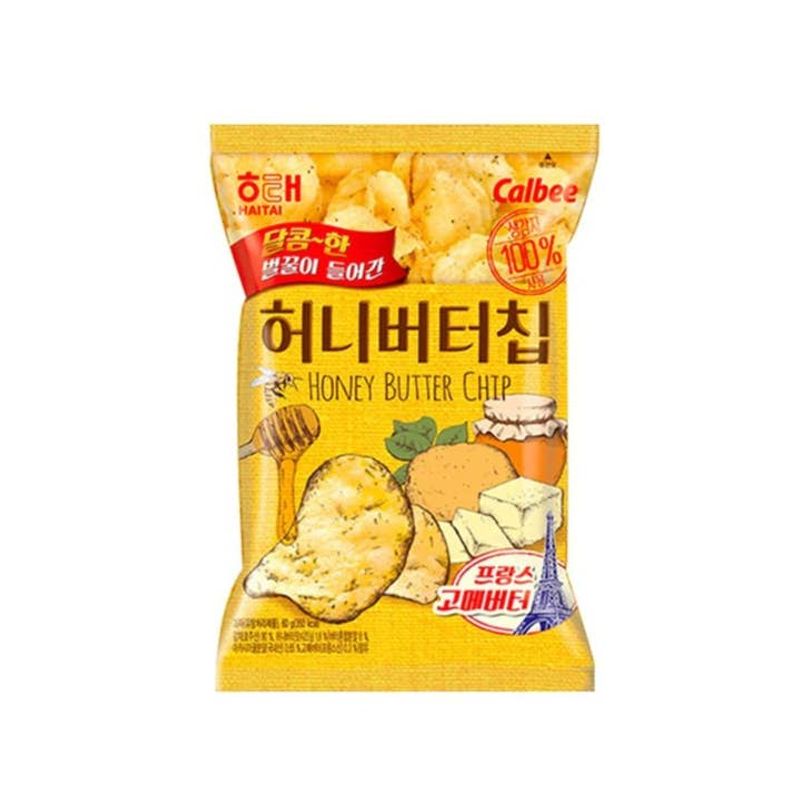
Few snacks have created the kind of nationwide frenzy that Honey Butter Chips sparked when they debuted in 2014. Stores sold out within minutes, resellers charged premium prices, and social media exploded with “chip hunting” posts as Koreans desperately sought this perfect balance of sweet and salty.
The magic formula combines real honey powder and butter with just the right amount of salt on a perfectly crisp potato chip. The flavor starts buttery, transitions to sweet honey notes, and finishes with a satisfying saltiness that keeps you reaching for more.
The “Honey Butter Craze” eventually spawned countless imitators and honey-butter-flavored everything – from fried chicken to pretzels. Despite the competition, the original chips remain a must-try introduction to modern Korean snack culture.
4. Choco Pie (초코파이)
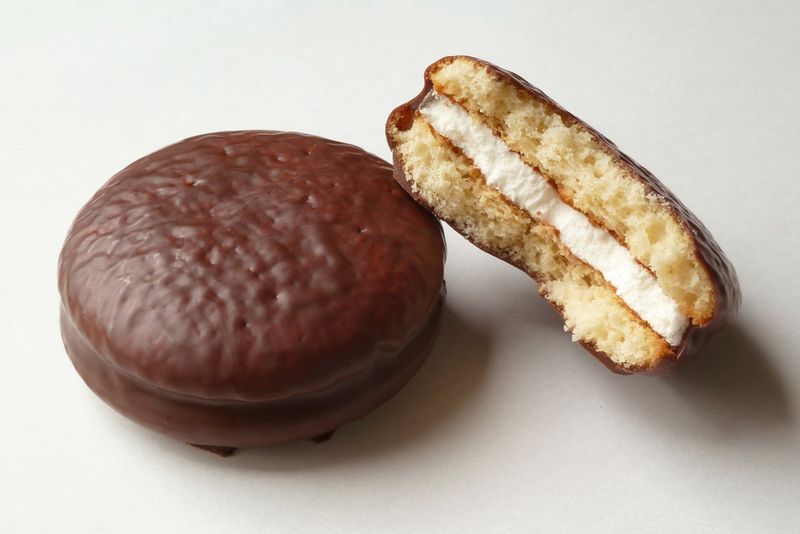
Unwrap the distinctive foil packaging to reveal what looks like a chocolate-covered moon – two soft cake layers sandwiching a marshmallow filling. One bite of a Choco Pie transports Koreans back to childhood, making this humble snack cake a powerful nostalgia trigger across generations.
The texture strikes a perfect balance: the cake is moist but firm enough to hold together, while the marshmallow center provides just the right amount of gooey sweetness. The chocolate coating ties everything together with its subtle cocoa notes.
Beyond mere snacking, Choco Pies gained geopolitical significance when they became valuable black market currency in North Korea. South Korean workers would give their North Korean counterparts Choco Pies as bonuses in joint economic projects, creating an unexpected symbol of capitalism in the isolated nation.
5. Bungeoppang (붕어빵)
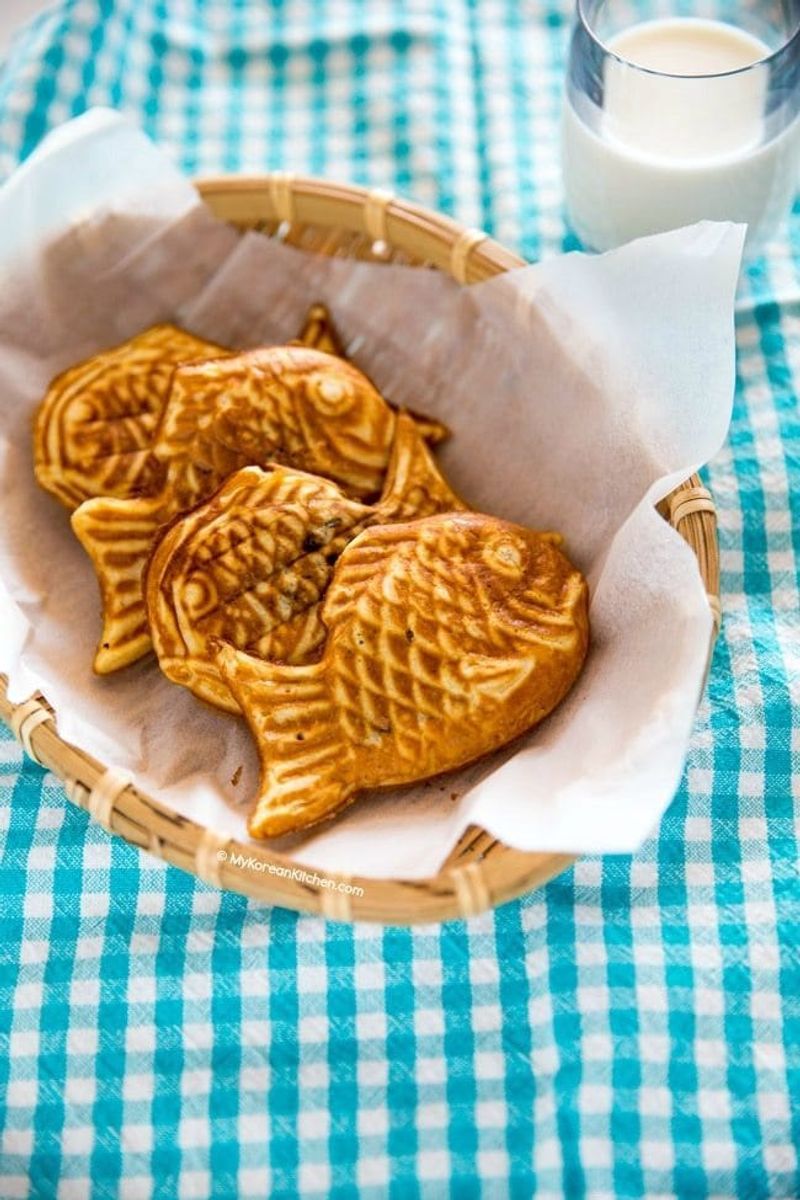
Nothing announces winter in Korea quite like the sight of bungeoppang vendors with their distinctive fish-shaped waffle irons. These goldfish-shaped pastries emerge golden and steaming, filled with sweet red bean paste that warms both hands and heart on frigid days.
The contrasting textures make bungeoppang irresistible – a crispy, slightly caramelized exterior gives way to a soft inner layer of cake-like batter, which in turn surrounds the smooth, sweet red bean filling. Modern variations offer custard, chocolate, or even cream cheese fillings for those who find traditional red bean too unfamiliar.
The name literally means “carp bread,” though it bears no fishy flavor. The shape supposedly originated from Japanese taiyaki, but Koreans have embraced bungeoppang as their own beloved winter tradition, with vendors’ bells creating a Pavlovian response in passersby.
Leave a comment